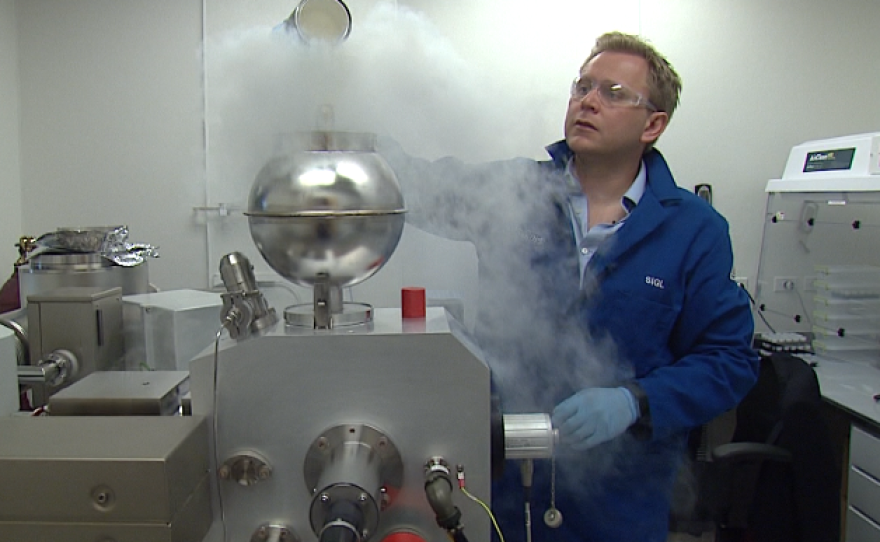New Mexico is a long way from the moon. But for a new study published Wednesday in the journal Science Advances, a San Diego scientist interested in the moon's early formation looked at New Mexico desert sands transformed by the first nuclear bomb test.
The 1945 Trinity nuclear test produced extreme temperatures, turning sand near the blast site into a greenish glass known as trinitite.
Scripps Institution of Oceanography geochemist James Day said this historic nuclear test didn't just change world politics. It also gave scientists like him a perfect natural experiment for testing theories about how the Earth's moon came to be.
"We needed something that was high enough in temperature to approximate the conditions that we think occurred during the formation of the moon," Day said. "And the trinitite material exactly matched those conditions."
Day, who led the study, acquired these unique samples by collaborating with scientists at NASA and Washington University.
According to the giant impact theory, the moon formed as a result of a huge object the size of Mars colliding into Earth. Like a nuclear bomb, this impact would've produced extremely high temperatures and tons of debris.

By chemically analyzing trinitite samples, Day and his colleagues found that the shards of glass closest to the Trinity blast site were lowest in volatile elements like zinc, which must have been vaporized by the nuclear explosion.
Day says zinc depletion can also be found in samples from the moon, providing further evidence for the giant impact theory.
"In fact, what we found is these glasses almost exactly match what we see in lunar samples themselves," said Day.
The idea of studying the remains of a seven decade-old nuclear test in order to answer questions about the solar system's early history may sound strange, Day admits. But he says the destructive force of the Trinity nuclear bomb also unleashed valuable scientific data.
"We saw an opportunity to use an experiment of epic proportions to demonstrate a process that is planetary in scale," Day said. "This is the only anthropogenic, human-made experiment that really approaches those kinds of conditions."






